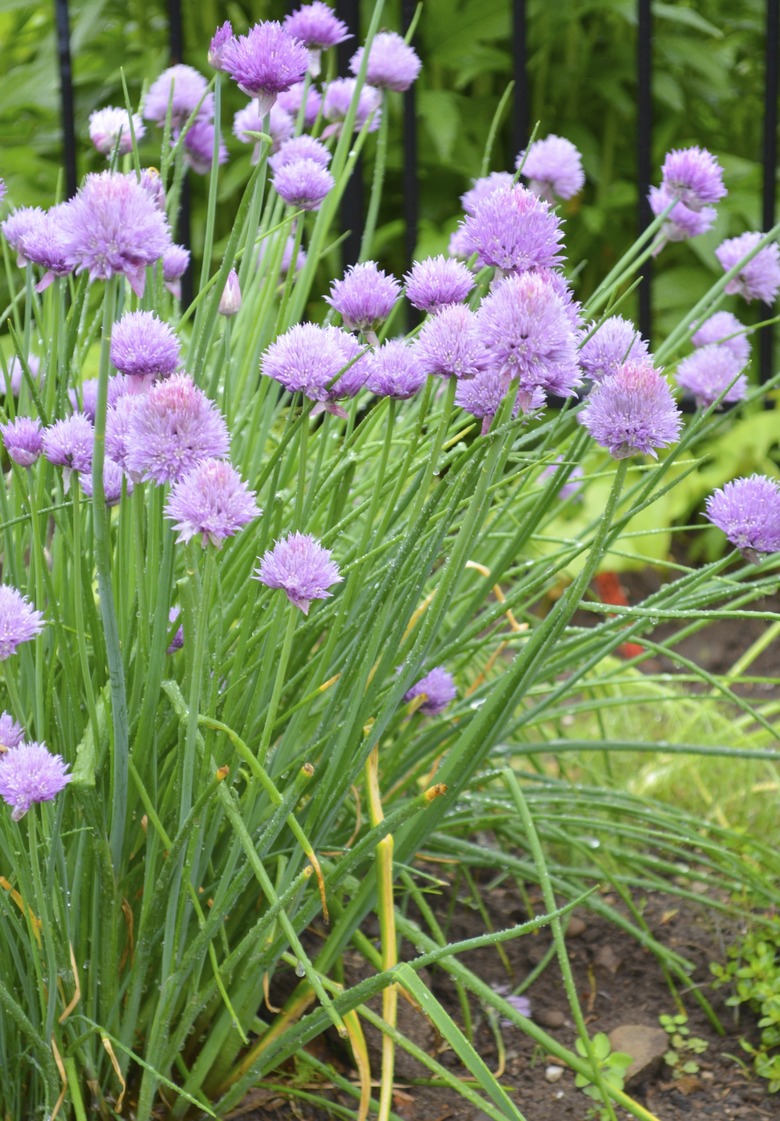How To Identify Wild Chives
With their intense, onion-like smell and flavor, wild chives (*Allium schoeneprasum*) are easily identified throughout the United States. Although other plants may look similar, wild chives' leaves, growing habit and flavor set them apart from similar herbs. Wild chives add a delicious onion flavor to any dish, so they're worth learning to identify.
With their intense, onion-like smell and flavor, wild chives (Allium schoeneprasum) are easily identified throughout the United States. Although other plants may look similar, wild chives' leaves, growing habit and flavor set them apart from similar herbs. Wild chives add a delicious onion flavor to any dish, so they're worth learning to identify.
Telltale Leaves
To spot wild chives, observe their growing habit. Look for dense clumps that stand out from the surrounding grass. Wild chives grow taller than grass and have thicker leaves. Examine the leaves and look for wild chives' trademark: dark green, thin, cylindrical, hollow leaves that taper to a point at the top. Finally, estimate their height. Wild chives typically grow to a height of 6 to 10 inches.
- With their intense, onion-like smell and flavor, wild chives (Allium schoeneprasum) are easily identified throughout the United States.
- Examine the leaves and look for wild chives' trademark: dark green, thin, cylindrical, hollow leaves that taper to a point at the top.
Distinctive Flowers
Examine the flowers and look for distinctive, small, pale purple flowers arranged in tightly packed clusters. Wild chive flowers grow from stalks that project from the same point. Be on the lookout for flowers with a rosy lavender color in late May and June, when they look similar to red clover (Trifolium pratense), which grows in U.S. Department of Agriculture plant hardiness zones 3 to 9. Also look for petals approximately 1/2 inch long with bluish purple anthers inside the stamen, where pollen is produced.
Prime Locations
Wild chives can be found in Europe, Asia and North America as well as in arctic climates up to 70 degrees North latitude and in mountainous regions at lower latitudes. They are native to Canada and Alaska and can be found throughout the lower 48 United States. These perennial herbs thrive in USDA plant hardiness zones 3 to 9. Look for them in areas adjacent to spots where chives are cultivated, such as gardens or farms. Find them in areas with full sun and well-drained soil.
- Examine the flowers and look for distinctive, small, pale purple flowers arranged in tightly packed clusters.
- Look for them in areas adjacent to spots where chives are cultivated, such as gardens or farms.
Distinguishing Wild Chives
There are many Allium species, including giant Siberian chives (Allium ledebourianum), garlic and Chinese chives (Allium tuberosum), which grow in the same USDA plant hardiness zones. One easy way to distinguish wild chives from similar plants is to check the plant to see if it has a bulb. Unlike other Allium varieties that produce small bulbs and have space between flowers, chives do not have a bulb. Wild chives smell like onions, while garlic chives smell like garlic. Finally, wild chives and giant Siberian chives have tubular leaves while garlic and Siberian garlic chives have flat leaves.
Toxicity Warning
If possible, get permission before picking chives you find in the wild to ensure you can legally remove them from the area. In addition, definitively identify the plant as chives before cooking with or eating it. The best way to do this is to smell it. If the plant does not smell like onion, it is not meant to be eaten and could be poisonous.
- There are many Allium species, including giant Siberian chives (Allium ledebourianum), garlic and Chinese chives (Allium tuberosum), which grow in the same USDA plant hardiness zones.
- One easy way to distinguish wild chives from similar plants is to check the plant to see if it has a bulb.
References
- Food Under Foot: Onion Grass and Non-Edible Look-Alike
- Penn State University Extension: Chive
- United States Department of Agriculture: Natural Resources Conservation Service: Trifolium pratense L. red clover
- Outside Pride: Red Clover Seed
- Herb Society of America Fact Sheet: Chives
- Growing Herbs For Beginners: Chives and Garlic Chives
